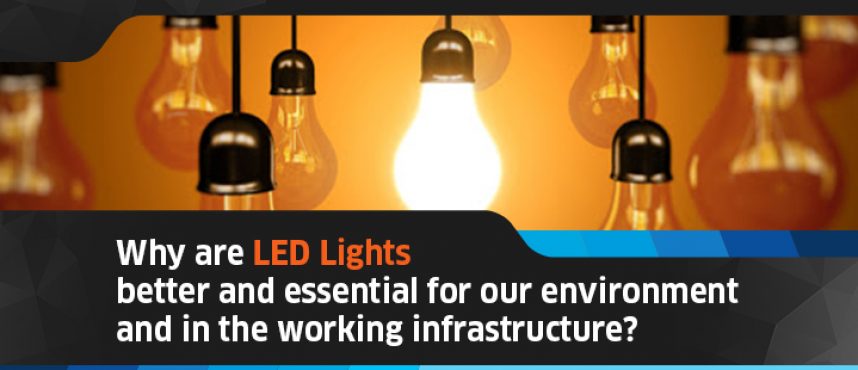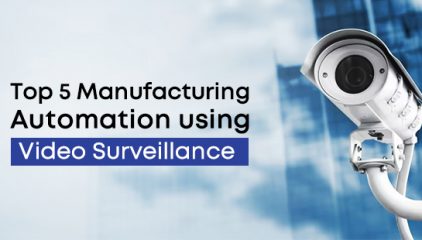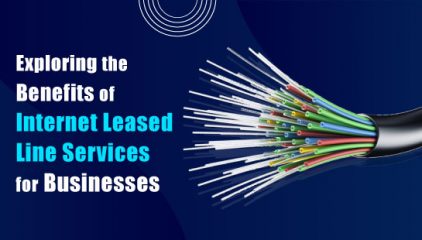Converting Fluorescent Working Infrastructure’s Lights to LED
A Light-emitting Diode is a two-lead semiconductor light source. It is a p–n junction diode that emits light when activated. When a suitable voltage is applied to the leads, electrons are able to recombine with electron holes within the device, releasing energy in the form of photons. The Electroluminescence effect and the color of the light (corresponding to the energy of the photon) is determined by the energy bandgap of the semiconductor.
Do you still use fluorescent lights in your working infrastructures?
- If yes, then are these lights energy-saving or of any good?
- Do they light up cornered, dark and dim areas well?
- Is it possible for you to work well in fluorescent lights or do you have to strain your eyes to see the fine details?
- Are you and your employees sick and tired of those wavering bulbs and bustling ballasts?
- Do you often change your faulty fluorescent ballast or tubes?
- Have you switched your fluorescent lights out with more expensive lighting options?
- Does your admin staff need to collect the broken fluorescent lights that take up space? This is because fluorescent tubes need to be recycled properly because they contain mercury.
And did you know that every time you turn on and off a fluorescent fixture, the life of the tube decreases? So if you are in an area where tubes are turned on and off a lot, then you have actually reduced the life of the tube. That is why fluorescent tubes do not work well with motion sensors. If you are facing any of these situations, then you should consider changing your fluorescent lights over to LED Lights.
LED lights can make a huge difference for you in the short and long term. This applies to you even when you own a workshop, warehouse, manufacturing area, machine shop or repair store. You can lower your lighting bills by almost 50% or more as well as eliminate your operating costs. Since LED does not contain mercury, you can stop paying recycling fees on those old fluorescent tubes.
One might say that LED lights are expensive than fluorescent lights. But, even then LED tubes and LED fixtures to save a lot of money and pay good ROI in reduced lighting costs. Which means you can save on the extra money you spend on buying LED lights. Also, after you recoup the costs of your LED lights, you can save more on electricity bills for the life of the fixture. And LEDs last a very long time.
Let’s look at a comparison between Fluorescent Lights and LED Lights to better understand how LED Lights can help you save money, electricity and earn you good ROI considering a smooth working environment.
Fluorescent Lights vs. LED Lights:
| Topic | LED Notes | Fluorescent Notes | Winner |
| Correlated Color Temperature | LEDs are available in a wide range of color temperatures | Fluorescent light is available in a range of CCT values that can be adjusted by changing the amount of phosphor inside the bulb. | LED |
| CRI | CRI for LED is highly dependent on the particular light in question. That said, a very broad spectrum of CRI values is available ranging generally from 65-95. | Typical CRI values for fluorescent light are between 62 and 80. This is a fairly good color rendering but it leaves some room for improvement when compared to LED. | LED |
| Cycling (Turning On/Off) | LEDs are an ideal light for purposely turning on and off because they respond rather instantaneously (there is no warm-up or cool-down period). They produce steady light without flicker. | Every time you turn on and off a fluorescent fixture, a tubes life decreases. | LED |
| Dimming | LEDs are very easy to dim and options are available to use anywhere from 100% of the light to 0.5%. LED dimming functions by either lowering the forward current or modulating the pulse duration. | Newer CFL bulbs can be dimmed very effectively (down to about 15% of their normal light) while older fluorescent bulbs are often not suitable for dimming. If looking to dim a fluorescent bulb, make sure that you choose a ballast that is rated for dimming. | LED |
| Directionality | LEDs emit light for 180 degrees. This is typically an advantage because light is usually desired over a target area (rather than all 360 degrees around the bulb). | Fluorescent light is omnidirectional meaning it emits light for 360 degrees, requiring fixture housings or reflectors to direct the emitted light. | LED |
| Efficiency | LEDs are very efficient relative to every lighting type on the market. Typical source efficiency ranges 37 and 120 lumens/watt. Where LEDs really shine, however, is in their system efficiency. Most values for LED system efficiency fall above 50 lumens/watt. | Fluorescent and CFL lights are very efficient compared to incandescent lights (50-100 lumens/watt source efficiency). They lose out to LEDs principally because their system efficiency is much lower (<30 lumens/watt) due to all of the losses associated with omnidirectional light output and the need to redirect it to the desired area. | LED |
| Emissions | LEDs produce a very narrow spectrum of visible light without the losses to irrelevant radiation types (IR or UV) associated with conventional lighting, meaning that most of the energy consumed by the light source is converted directly to visible light. | Fluorescent lights actually produce primarily UV radiation. They generate visible light because the bulb is coated with a layer of phosphor that glows when it comes in contact with UV radiation. Roughly 15% of the emissions are lost due to energy dissipation and heat. | LED |
| Heat Emissions | LEDs emit very little forward heat. | Fluorescent lights emit heat that is absorbed by the ballast and/or lost to the environment. Roughly 15% of the emissions are lost due to energy dissipation and heat losses. | LED |
| Lifespan | LEDs last longer than any light source commercially available on the market. | Fluorescent lights have a good lifespan relative to some bulbs but not compared to LEDs. | LED |
| Lifetime Costs | LED lighting has relatively high initial costs and low lifetime costs. | Fluorescent lights are relatively cheap to purchase but relatively expensive to maintain. | LED |
| Size | LEDs can be extremely small (less than 2mm in some cases) and they can be scaled to a much larger size. | Compact fluorescent lights (CFLs) are designed to be small (such that they can replace an incandescent household light). Even so, they typically aren’t produced below roughly a centimeter in width. Standard fluorescent tubes are bulky and fragile at the same time. Neither compares to the small size and robust build of a solid-state light like LED. | LED |
| Warranty | Often 5 to 10 years | Typically 1-2 years | LED |
Why are LED Lights better and essential for the environment and in the working infrastructure?
- Highly energy efficient
- Contains no toxic elements
- Do not emit UV lights
- Less light is consumed due to LED Lights 180 degree feature.
- LED Lights have a long life span
How NTIPL help you to convert from fluorescent infra lights to LED?
Network Techlab is one of the prominent distributors of LED Lights and top LED Light dealers in Mumbai and across India for all working infrastructure, corporate LED Lights, Warehouse LED Lights, Industrial Lighting, Indoor LED Lights, Outdoor LED Lights and many more. Our LED lights are highly energy-efficient and consume up to 40-70% less power than conventional lights (fluorescent lights), which results in saving for both energy and money. Cash and vitality are additionally spared through subsiding upkeep and substitution costs additional to the LED’S life expectancy.
Below are some of the steps/measures that would be taken by our experts in order to convert your working infrastructure from Fluorescent Lights to LED Lights.
- Retrofitting your lights
- Replacing with LED fixtures
- Retrofit fluorescent fixtures to LED shop lights
- Switching from fluorescent shop lights to LED fixtures
Warm regards,
Niraj Shah
Asst. Vice President – Power Conditioning and Backup Solutions
T: 022-6681 4267 | M: +91-7506034878 | E: niraj.shah@netlabindia.com










